How to spend $1000 on fountain pens to save your life
Fountain pens have saved my life in many ways… and they can help you too.
I’m posting this on World Mental Health Day to illuminate the importance of talking to someone/anyone (or in this case something) about your emotions, to air them out and deal with them before they deal with you.
Table of Contents
- Holiday cards are a gateway drug
- Collection or hoarding?
- How do you recover from obsession!?
- Spencerian Script (no relation)
- Bullet Journaling
- Venting Anger and barfing joy
- I’m so pissed off! => Well maybe it’s my fault
- Your journaling is getting kinda mental
- What the hell did I do last Saturday night!? When is/was the kids recital?
- Joygasm
- Maybe a $10 journal can save you $1000s in mental health bills
Holiday cards are a gateway drug
 When I was a kid, I got a basic Sheaffer calligraphy set that included a rather simple pen, 4 nib sizes, and a set of four ink cartridges. I used only one of the nibs and two of the cartridges to play around with line weights and make some fancy writing in my drawing pad. Fast forward a bit to my 20’s and I started using this set to write in things like Christmas cards and some letters I’d send on special occasions. ‘Dressing up’ the cards with some flourished lettering and varying width of lines was so satisfying. Knowing that the receiver of the card would see the extra effort I’d put into it, and the joy that would bring gave me a reciprocal joy.
When I was a kid, I got a basic Sheaffer calligraphy set that included a rather simple pen, 4 nib sizes, and a set of four ink cartridges. I used only one of the nibs and two of the cartridges to play around with line weights and make some fancy writing in my drawing pad. Fast forward a bit to my 20’s and I started using this set to write in things like Christmas cards and some letters I’d send on special occasions. ‘Dressing up’ the cards with some flourished lettering and varying width of lines was so satisfying. Knowing that the receiver of the card would see the extra effort I’d put into it, and the joy that would bring gave me a reciprocal joy.
 Then about 3 years ago in October I decided maybe it was time to upgrade my fountain pen. A co-worker in my org had showed me a Pilot Vanishing Point, and I’d fell in love with it. So I bought the Blue Carbonesque one and used it that season.
Then about 3 years ago in October I decided maybe it was time to upgrade my fountain pen. A co-worker in my org had showed me a Pilot Vanishing Point, and I’d fell in love with it. So I bought the Blue Carbonesque one and used it that season.
However, for the next few months I did a deep dive into these Pilot pens. I discovered they market them in Japan as “Capless” pens, at a substantial discount for the very same pen! So… I bought 3 more of them, with the misguided reason that I’d want them in different weight nibs. Everybody would do this, am I right? (#obsession begins).
Then I found some other pens that were just as cool to me, but much less expensive… and bought a few more. Then I thought, maybe I don’t need to use simple black ink. I found some really cool blues, then reds (Writer’s Blood is a current favorite). I got a whole collection of a little known company that makes ink that is highly favored by a fountain pen YouTube that tested a slew of different brands.
Having fountain pens, especially those with a cartridge which is smaller, you tend to run out in a few weeks of writing. This is a good thing… because it allows you to change your ink to a radically different color and add a bit more fun to the writing experience.
So I’ve ended my adventure with 10 pens, not to miss about 10+ bottles of various colors and types of ink! So I swore off buying any more of these items, and even gave some of them away.
Collection or hoarding?
Why did I buy so many!!!? I calculated I have enough ink to last 25yrs if I continue writing 2-3 pages a day.



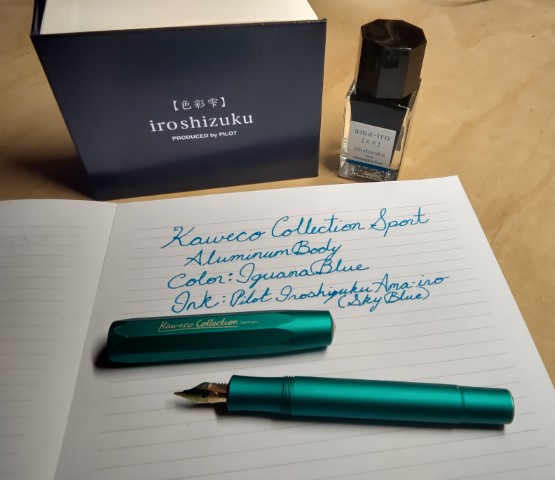
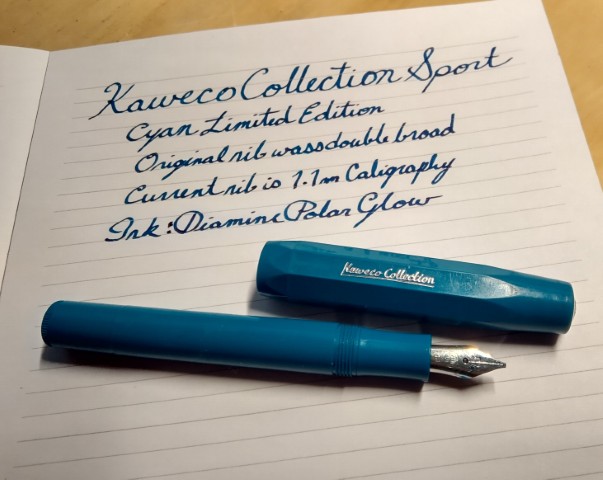
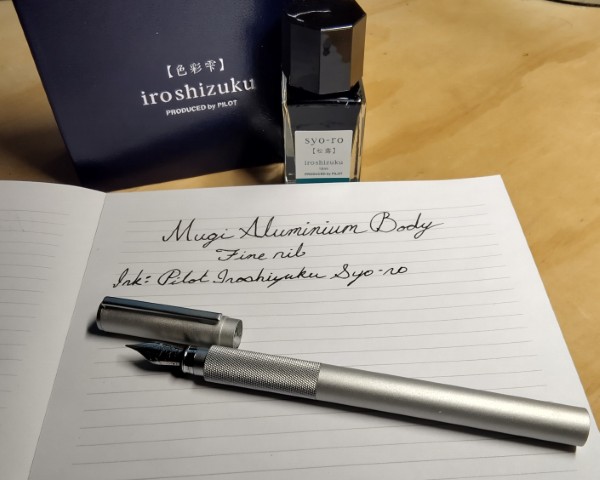

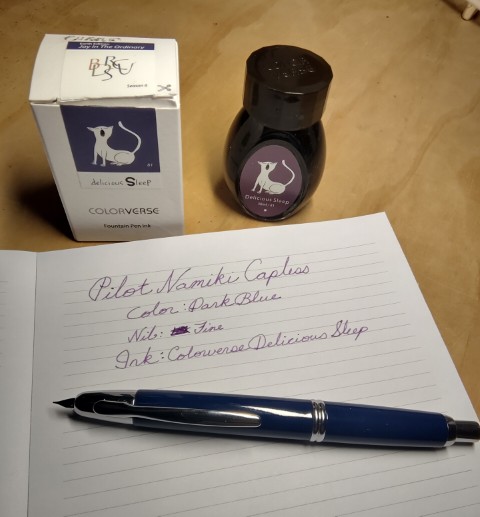
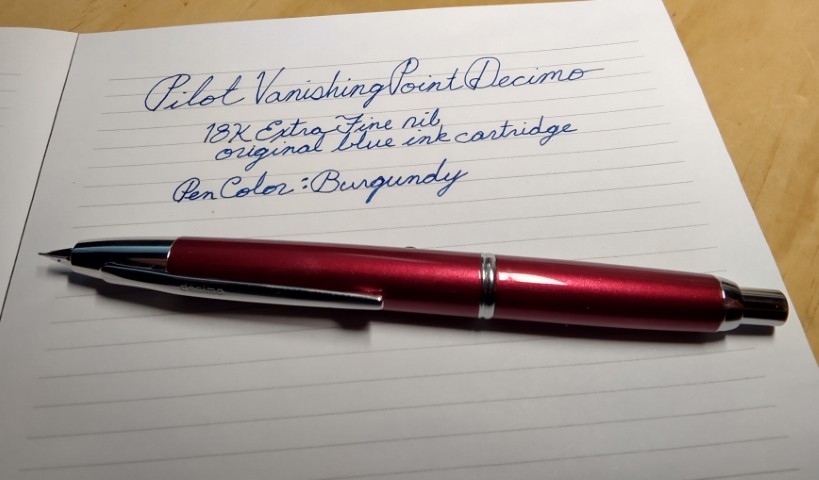
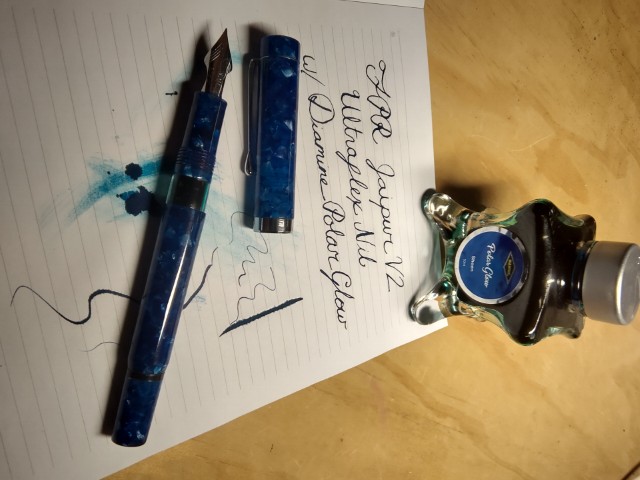 I don’t recommend the FPR, a leaky yet beautiful pen
I don’t recommend the FPR, a leaky yet beautiful pen
How do you recover from obsession!?
If you make lemonade when you’ve got lemons, what do you do when you’ve got too many fountain pens… start using them. I figured I couldn’t really reverse this mistake very easily, but I could make something good come from it. So I took out my old college mini-sketch book that I’d kept as a sketch/journal at the time and started filling the last 70 or so pages left with notes of my day. This was my way of retro-actively justifying my over-purchasing of fountain pens and inks, and the guilt kept me writing in that journal every day for the rest of that year, filling it completely.
Spencerian Script (no relation)
My handwriting when I was a kid was atrocious, mainly from a dyslexia related condition, but also because I never really put a lot of effort into it until college. In college I learned Architectural printing style and fell in love with making my writing super legible so that it didn’t look like a child had drawn the designs I was being critiqued on.
Now as an adult I wanted to improve my cursive to have a better sense of style. I did a bit of research and stumbled upon (likely due to the last name) the Spencerian Script style that was popularized to assist in business writing. It was an interesting wholistic theory to making letters consistent with each other in a way that allowed the writer to move fast but have a highly legible script to avoid miss-communication in business documents pre-typewriter/computer. 
I largely practiced styling my upper case letters to be a flourished and bold form of this style, then made all my lower-case letters as consistently similar to each other to have an overall ‘crisp’ looking effect on the written page, due in most part to having the same exacting slant. I don’t have in any means the best looking script even now, but it is miles ahead of that dis-graphically challenged child that started this journey. 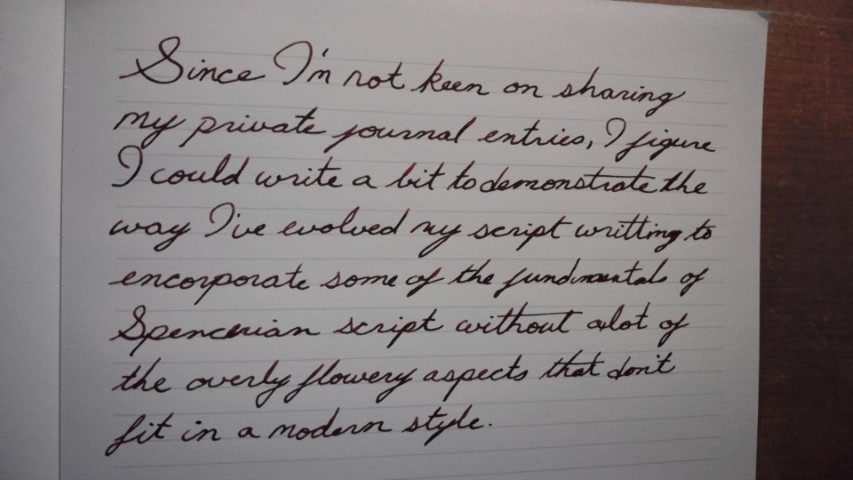
 Just the caps man.
Just the caps man.
Bullet Journaling
While I was filling up that old sketch pad, I was also researching journaling techniques. It so happened that right at that time Bullet Journaling (Bujo) had hit the zeitgeist of the nerd collective and I was intrigued to add some life organization features to my simple ‘diary’ style of journaling.
I didn’t subscribe to all the items of Bujo, but likes some of the calendar recording and todo list items, so I incorporated them into my daily/weekly/monthly journaling process. I have since removed some of these, and added others as I found my needs differing. This is completely in line with Bujo however, as it is supposed to be quite fluid to meed the style and life goals of the user.
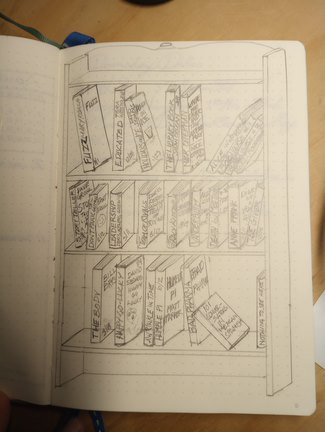 My favorite part of this was tracking all my books read in a year by drawing a bookcase and ‘placing’ books on the shelves as I finished them.
My favorite part of this was tracking all my books read in a year by drawing a bookcase and ‘placing’ books on the shelves as I finished them.
Venting Anger and barfing joy
At first in my experience journaling was simply a documentation of ‘what did I do today?’ and was quite boring. This slowly morphed into ‘what interesting thing did the kids do today?’. Less boring, but still documentary.
This took quite a while to relax into a style I coined as ‘vomiting my thoughts’ onto the page. A more stream of conscious recording of my actual thoughts as they occur to me. At first this started as me wanting to write in my journal, but not really having any ‘event’ to write about. So I simply started by writing “I have nothing to write about…” and just continued writing the words in my head after that.
The result was a series of entries that started nowhere, but ended with real honest thoughts on items of importance. Items that either excited, bothered, enraged, or filled me with strong emotions of either side of love and irritation. This is where the boundary of documentation and meditation therapy meet.
I’m so pissed off! => Well maybe it’s my fault
Quite a few posts that started in anger ended with resolution and compromise despite never being mediated by any outside influence. For example, a post might start with “I’m so pissed at Fiona for saying this thing and insulting my way of doing things” (or something much more colorful, I’m not going to spill all the beans in a blog post).
The speed at which you write is much slower than that of which you rant inside your head. Therefore, by the end of a few sentences of writing, my thoughts had pivoted slightly softer. Then, by a few more, as if I was a separate person listening in unbiased, I’d resolved that I was at least partly (if not fully) at fault. Usually, not always, I’d even come up with a solution of either compromise or full acquiesence to the fact I was totally wrong.
Your journaling is getting kinda mental
This feedback loop of thought to writing, slowing the thoughts, giving time to think fully, to writing more slow thoughts… this leads to a more introspective thought process that is not usually available to social conversation or even in the typical therapy session. Granted, the ‘therapist’ in this scenario is definitely not a trained professional, and is quite certainly highly biased. Still, there is a form of self-therapy going on here.
I have discussed with Dr. Self Insight LMFT other subjects of concern and vexation and found great comfort in simply getting it out on the page. Then having written it all out, finding a way forward in my thinking and feelings that are far healthier than letting them spin faster and faster inside a closed loop in my head where no changes occur. In programming we call this an infinite or non-terminal loop; generally this is a very bad condition (don’t snarl at me game developers).
This daily (intentions meant) ritual of barfing your thoughts into a journal can lead to healthy mental attitudes about your situations, relationships, and professional work conundrums. It is vital to get a good grip on what the problem or situation is prior to finding a way to approach to deciding on a choice of action.
What the hell did I do last Saturday night!? When is/was the kids recital?
A much simpler feature of the journaling process is the most obvious, documenting the daily events of your life. This may seem useless in a day when we all have electric calendars and emailed eVite events. Yet there are littler things that never would make it into these electronic schedulers. “HB lost a tooth today!!! He is so excited to put this under his pillow tonight. While he was sleeping I slipped a silver dollar coin in its place for him to discover in the morning.” Where would you go to look for the exact date your son lost his tooth, or how much the tooth fairy paid for it? A journal, that’s the only place.
I also use some of the Bujo methods to keep a yearly calendar split over four pages (3mo per page) to keep quick dates to remember, and additionally started a month per page view where I try to write a ‘thought of the day’ or ‘title the day’ (I’m failing at this, but I like it still). I used to keep a ‘habit tracker’ on those pages as well, but I’m so bad at updating it even when I am doing my habits, that this seems counter-productive and I’ll likely drop it.
Joygasm
If it seems like the journals I write are full of negative thoughts, you are wrong. Mostly they are filled with me expressing my happiness in the awesome events of my kids experiencing new things in the world. Next they are filled with me expressing pride and joy in achieving goals in my life with Fiona, successes at work, or new things I’ve learned in my various hobbies.
This would Not be possible if I was not writing in the journal on a consistent basis. If I only picked it up to gripe and moan, yes, it would be the novel of a sad and angry man with a regrettably besot upon life.
Yet, by simply making a habit of carrying it everywhere and writing in it as often as possible, and I do write quick things in it multiple times a day, you get in a rhythm of putting all your thoughts down, leading to a much more diverse range of emotional entries that better reflect the person you really are.
Every once and a while (I do this rarely) going back to read through them is also enlightening and can make you appreciate for a second time the joy you had in happy events of the past. Additionally you can reflect on the challenges you have already overcome from tougher times recorded within, and maybe write those thoughts in a new entry to reflect further. This… is therapy.
Maybe a $10 journal can save you $1000s in mental health bills
All this is to say… I believe that journaling has helped me in a similar way to going to a therapist, and it is always available, no scheduling needed, no traveling to their office. I don’t feel you need to spend that $1000 you saved on fountain pens, but maybe just buy one good one. They are simply way better for writing than any ball point or felt you will ever use. And if you have something that gives you a smattering of joy while journaling, it will keep you coming back to write, so … it may be worth that investment.
Be well, and write on.
